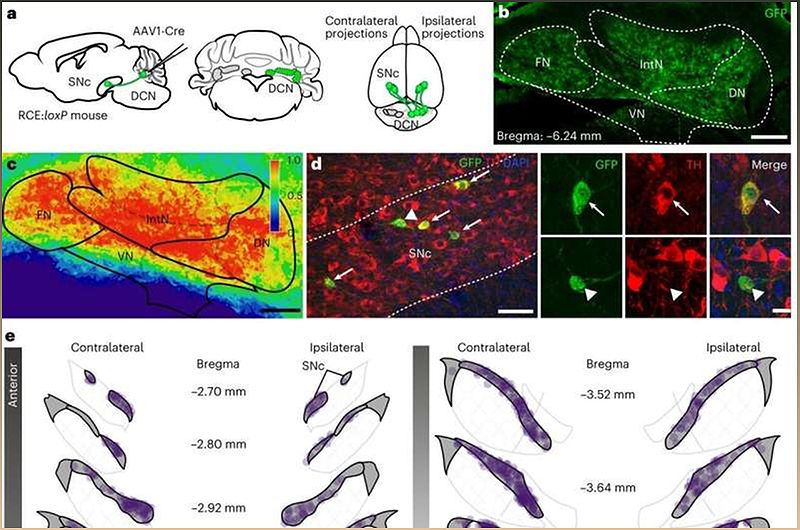New findings published in Nature Neuroscience reveal a groundbreaking discovery about the connection between the cerebellum and basal ganglia. This research challenges the traditional view of how the brain processes voluntary movements and conditioned learning. By uncovering this hidden connection, scientists gain fresh insights into addiction and neurodegenerative diseases like Parkinson's. Explore the direct communication between these two brain regions and its potential impact on our daily behaviors.
The Hidden Connection: Cerebellum and Basal Ganglia
Traditionally, the cerebellum and basal ganglia were believed to function independently in coordinating movement and learning. However, recent research has unveiled a hidden connection between these two regions, challenging our understanding of how the brain processes voluntary movements and conditioned learning.
By establishing a direct communication pathway, this discovery opens up new possibilities for understanding addiction and neurodegenerative diseases like Parkinson's. It sheds light on the neural mechanisms underlying these conditions and provides potential insights for novel therapeutic techniques.
The Role of Basal Ganglia in Movement and Reward Learning
The basal ganglia, often referred to as the brain's go-no-go system, plays a crucial role in determining whether we initiate or suppress movement. It is also involved in reward-based learning, which is facilitated by the release of dopamine.
Understanding the basal ganglia's role in movement and reward learning is essential for comprehending motivated behavior, addiction, and even conditions like Parkinson's. By modulating dopamine levels, the basal ganglia influences movement initiation, the vigor of movement, and reward processing.
The Cerebellum: Brain's Optimization Machine
Located at the back of the brain, the cerebellum acts as the brain's optimization machine for motor learning. It is responsible for fine-tuning movements and optimizing their execution.
Contrary to previous beliefs, recent research suggests that the cerebellum is not solely involved in motor learning but also plays a role in reward-based behavior. Its connection to the basal ganglia and modulation of dopamine levels highlight its significance in shaping our habits and behaviors.
Implications for Addiction and Neurodegenerative Diseases
Unraveling the connection between the cerebellum and basal ganglia has significant implications for understanding addiction. The reward-based learning system involving the basal ganglia is often hijacked in cases of addiction, leading to compulsive behaviors.
Furthermore, this newfound understanding may offer insights into neurodegenerative diseases like Parkinson's. The cerebellum's direct influence on dopamine neurons in the basal ganglia provides potential avenues for therapeutic techniques, such as non-invasive stimulation, to alleviate symptoms and improve motor function.

